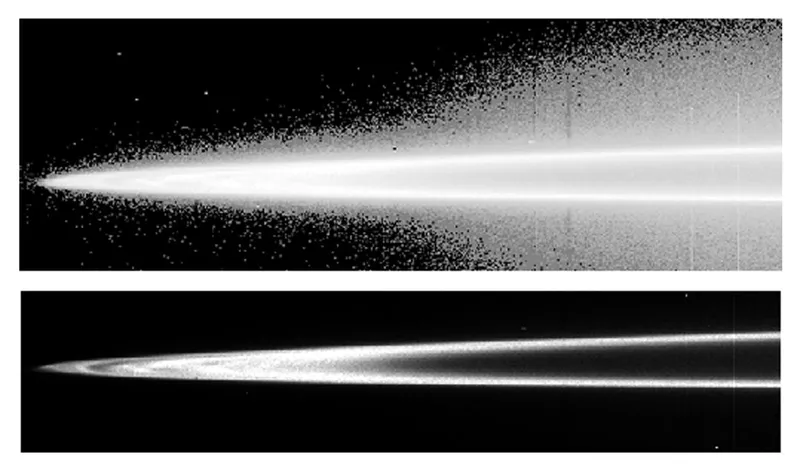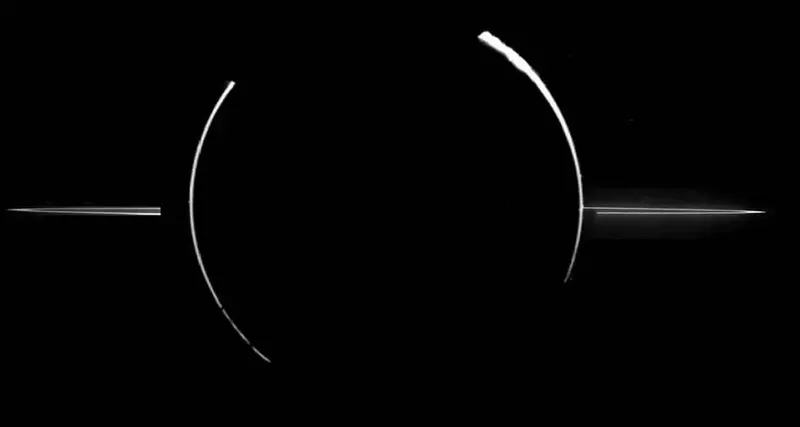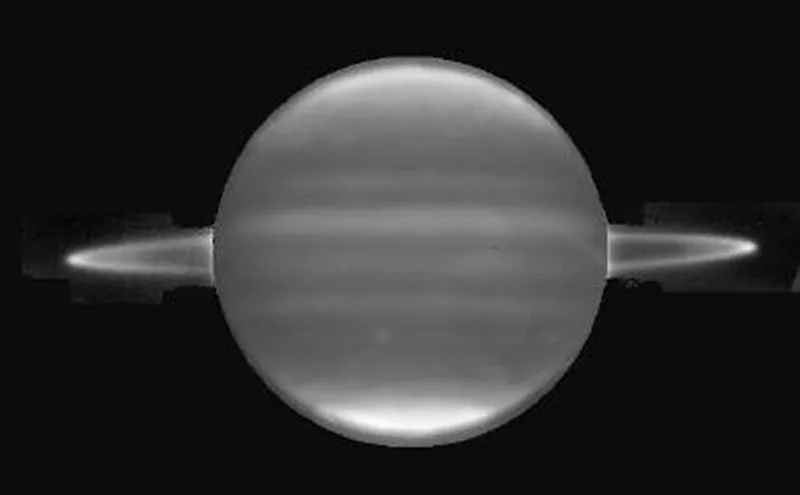We all know about the mesmerising rings of Saturn, but does Jupiter have rings? Yes it does.
OK, so Jupiter doesn’t have large, clearly defined rings like Saturn has, admittedly, but they're there.
In fact, Jupiter’s rings are so faint that they’re invisible to the naked eye, and extremely difficult to spot even with powerful telescopes. But they’re definitely there.
They've been observed and imaged by the Voyager and Galileo spacecraft, the Cassini mission, the Keck Telescope and, most recently, by the James Webb Space Telescope.

How many rings does Jupiter have?
Jupiter has four main ring structures.
Working outwards from the planet itself there is the thick, inner ‘halo ring’, which is 12,500km thick.
Then the ‘main ring’ which is very bright and very thin, just 30km thick in some parts
And two thick but very faint ‘gossamer rings’.
The halo ring is neutral or blue in colour, while the main and gossamer rings have a reddish hue.

Jupiter rings composition
The rings around Jupiter are thought to consist of material – most of it in the form of very fine particles of dust – that was previously ejected from the moons Metis and Adrastea as the result of collisions with asteroids, meteors or comets.
Whether the rings are as old as Jupiter itself or formed later on is a question that is yet to be answered.

Discovery
So faint are Jupiter’s rings that we had no idea they were there at all until images were sent back by the Voyager 1 space probe in 1979.
What we know about them today is derived mostly from further imaging by NASA’s Galileo and Cassini missions in the late 90s and early 00s, as well as from observations by the Hubble Space Telescope and the ground-based Keck telescope.
Scientists now believe that it is the gravity from Jupiter’s four large Galilean Moons (Ganymede, Callisto, Io and Europa) that has prevented Jupiter from forming large, well-developed rings like those that encircle its gas giant neighbour, Saturn.
And rings around planets may not be all that rare. Exoplanet J1407b, for example, has rings just like Saturn's.

Why planets have rings
There are rings across the Solar System, and we know that a few of its planets have rings.
The reason is, simply, gravity. Gravity and other competing forces formed our Sun and the protoplanetary disc out of which its orbiting planets formed.
Objects orbiting within a large body's gravitational threshold – known as the Roche Limit – endure tidal forces overwhelming their own gravity, which prevents their coalescence into solid object like a moon.








